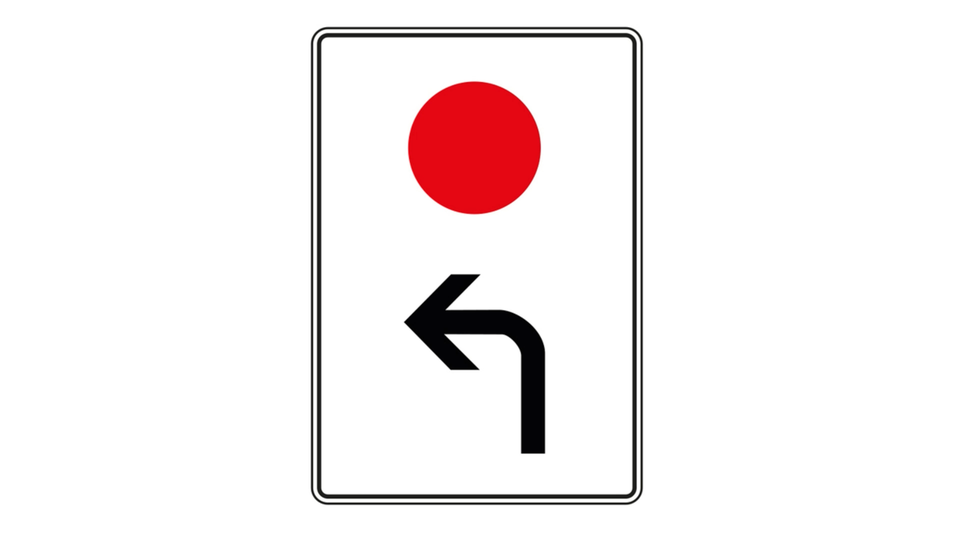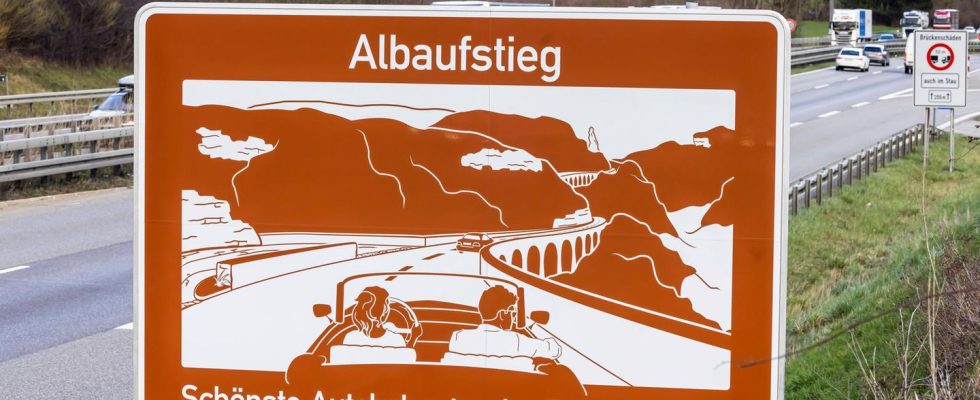Cost explosion
What the brown and white signs on motorways mean – and why there will soon be fewer of them
Tourist information board on the A8 motorway near Mühlhausen.
© Arnulf Hettrich / Imago Images
So-called tourist information boards have been lining the motorways in Germany for more than 40 years. The actually practical signs that have long been part of the street scene could disappear over time. There are solid reasons for this.
There are more than 3,600 large, brown signs on the side of German roads Highways. They do not indicate speed limits or long-term construction phases, but rather possible destinations for excursions. These can be memorials, monuments or special landscapes. The first sign of this type was erected on the A8 in July 1983 and points to Teck Castle in Baden-Württemberg. But as various media are now reporting, it is conceivable that the number of signs will soon decrease significantly.
Because the approximately nine square meter boards are apparently very expensive – at least if Autobahn GmbH sticks to its price for their maintenance. The Lower Bavarian city of Straubing experienced this the hard way and shares its outrage with the public. Because two signs pointing to the local zoo had to be removed according to Autobahn GmbH, Mayor Markus Pannermayr was handed a hefty bill.
Cost explosion for sign renovation
The “daily News” reports that the state-owned Autobahn GmbH is concerned that the dilapidated foundations of the signs and their faded reflective strips are no longer compatible with the “traffic safety obligation”. According to Pannermayr, the GmbH is estimating “up to 83,000 euros” for their renewal He reacted with incomprehension and told the “Tagesschau”: “This is not a space mission that we are doing. It’s about putting up two signs along a street. That should actually be possible for 15,000 to 20,000 euros.”

It is said that the city paid around 6,000 euros when the signs were put up in 2001. This was mainly due to the fact that the southern Bavarian motorway directorate responsible at the time, for example, did not charge any costs for the administration. Autobahn GmbH, which has assumed overall responsibility for the trunk road network since 2017, has its hands tied in this regard – costs must be passed on in full, according to the report.
The high costs apparently resulted in the decision not to replace the signs. The city still incurs costs. The dismantling is estimated at around 10,000 to 12,000 euros. In other cases, such as in Sangerhausen in Saxony-Anhalt, Autobahn GmbH also sent shocking cost estimates. To renew the information about the Europa Rosarium, the city will pay 181,000 euros for two information boards, according to the “Central German newspaper“. Instead of a transfer slip, the mayor there, Sven Strauss, wrote a letter to Federal Transport Minister Volker Wissing, and Pannermayr did the same.
The highway effect is there, but it’s hardly worth it anymore
Although a study by the Harz University of Applied Sciences came to the conclusion a few years ago that the signs actually have “short, medium and long-term effects” in terms of visitor flows to the locations shown, they apparently do not do so to the extent that the horrendous costs are offset whose renovation would be worthwhile in some way.
It is therefore questionable whether the number of signs will increase in the coming years. Given the prices that Autobahn GmbH is charging, large-scale shrinkage is more likely.



